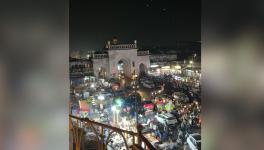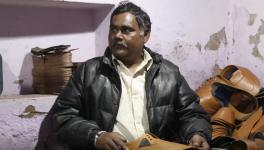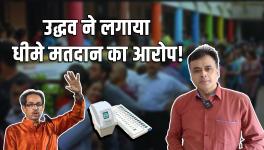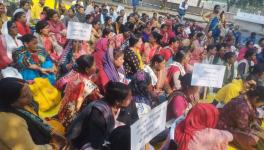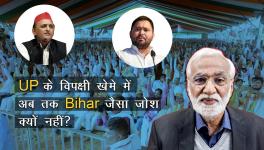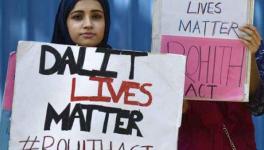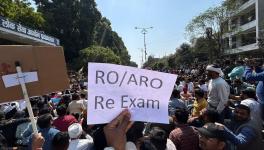Experts Describe Ways to Rein in Encounter Killings
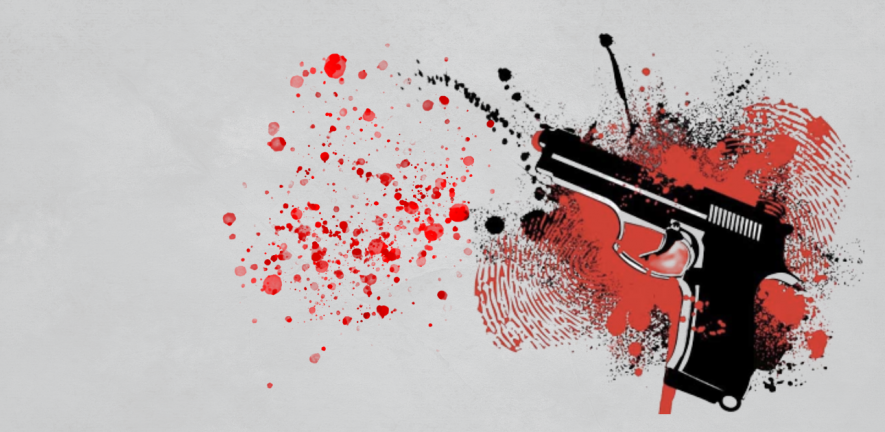
Representational Image.
The media spectacle of Atiq and Ashraf Ahmed’s death is but a symptom of a dangerous trigger-happy culture that is taking root within law and order enforcement agencies in India in general and Uttar Pradesh in particular, finds this The Leaflet investigation.
—
According to an investigative report published by The Indian Express on Thursday, since 2017, that is, when Adityanath was appointed chief minister of the state of Uttar Pradesh (UP), 186 ‘encounters’ have taken place in the state. The report further states that 5,046 alleged criminals have been injured due to police firing.
In a public statement titled Stop Encounter Killings in UP: End State Lawlessness! published on April 19, the People’s Union for Civil Liberties (PUCL), India’s largest human rights organisation, claimed that between March 2017 and April 2023, there were 10,900 police encounters in UP, with 185 alleged accused persons shot dead.
As per data furnished by the Union Home Ministry in the Parliament last month, in the period between January 2017 and January 2022, 655 encounter deaths were reported across India, with most of these deaths occurring in the states of Chhattisgarh, UP, Assam, Jharkhand, Odisha and Maharashtra.
A report published in 2021 by three rights groups had, by meticulously investigating and documenting 17 instances of encounter killings by the police in UP between 2018 and 2021, laid bare how the state circumvents the safeguards laid down by the Supreme Court and the National Human Rights Commission (NHRC). The report also exposed the complicity of the NHRC in turning a blind-eye to the cover-up.
Section 46 (arrest how made) of the Criminal Procedure Code (CrPC), and Sections 96 (things done in private defence), 97 (right of private defence of body and property) and 100 (when the right of private defence of the body extends to causing death) of the Indian Penal Code provide immunity to police officers when they undertake ‘encounters’ or extrajudicial killings under certain circumstances.
Murders of Atiq and Ashraf Ahmed
On April 28, a division Bench of the Supreme Court comprising Justices S. Ravinder Bhat and Dipankar Datta had called for a comprehensive affidavit from the UP government on the steps taken by it to inquire into the controversial killings of gangsters-cum-politicians Atiq and Ashraf Ahmed, which took police outside a hospital in Prayagraj on April 15. The Bench was hearing a petition filed by advocate Vishal Tiwari seeking an independent inquiry into the killings of the Ahmed brothers.
Atiq, a former member of parliament and member of legislative assembly (MLA) from UP, had more than 160 criminal cases pending against him and had been convicted in a kidnapping case. Ashraf, his brother, was also a former MLA from UP and had more than 50 criminal cases pending against him.
The Ahmed brothers, while in police custody, were shot dead in the presence of news media by three young men. A couple of weeks earlier, April 13, Atiq’s son, Asad and Atiq’s aide, Ghulam had been killed in an ‘encounter’ by a special task force of the UP police. Atiq, Ashraf, Asad and Ghulam were all accused persons in the murder of politician Raju Pal in 2005 and lawyer Umesh Pal in February this year.
On April 16, Adityanath announced the formation of a judicial commission headed by retired Allahabad High Court judge, Justice Arvind Kumar Tripathi, and comprising retired district court judge Brijesh Kumar Soni and former Director General of Police Subesh Kumar Singh, to probe the Ahmed brothers’ murder.
Doubts on the conduct of the police
The statement by the PUCL raised several concerns about the manner in which the Ahmed brothers’ murder took place as well as the ramifications of the same. It highlighted that the UP police did not opt to seek police custody of the killers of Atiq and Ashraf Ahmed when they were produced for remand on April 16 for their interrogation. Also, the Ahmeds’ medical check-up was done at an unusual time of the night and the police permitted the media to meet them in an open space in public, the PUCL noted.
During the hearing on April 28, the Supreme Court Bench questioned the need for the Ahmed brothers to be “paraded” by the police in public before the news media while being taken for a medical examination to a hospital, right before they were shot to death at point-blank range in full view of TV news media cameras by assailants posing as journalists.
According to Dr Meera Chadha Borwankar, a former officer of the Indian Police Service, it is rare that persons in custody are taken to hospitals in the late evening. Not taking custody of killers is also extremely strange, she opined.
Ravi Nair, executive director of the South Asia Human Rights Documentation Centre, a non-governmental organisation, opined that the shooting of those in police custody in cold blood without any hindrance by the police is indicative of connivance between the shooters and elements in the police.
Venkatesh Nayak, director of Commonwealth Human Rights Initiative India, an independent, non-partisan and nonprofit non-governmental organisation, speaking with The Leaflet, also expressed his concerns about the Ahmed brothers having been taken for a medical check-up late in the night. He raised questions about the police handcuffing them while taking them for medical inspection, even though there were numerous police escorts. The handcuffing could also have been a contributing factor in their inability to defend themselves, Nayak added.
Emphasising the inability of the police escorts, Nayak noted that the fact that the perpetrators were able to push through the escort, come in front of the Ahmed brother and shoot at them from point-blank range, raises a huge concern. He questioned the preparedness of the police to deal with untoward incidents where although multiple shots were fired, there was no attempt from the police escort to stop the perpetrators.
Nayak opined that while it is the responsibility of the police to ensure the security of those in custody, no measures seemed to have been taken in the case of the Ahmed brothers, except that they were handcuffed.
He expressed hope for the committee of enquiry to inquire about all these matters and compare them with the existing procedures. “If there are no standard operating procedures to ensure the safety of persons in custody, then that will need to be pointed out in a big way,” he remarked.
According to him, this was not the first time in the history of UP that those in custody, when taken for medical inspection or other purposes, had been attacked. He opined that this calls for strict actions against the police— not merely by suspending them from duty, but by punishing them for criminal negligence.
According to Kishalay Bhattacharjee, senior journalist and author of Blood on My Hands, Confessions of Staged Encounters (2015), doubts raised about the conduct of police in the murder of the Ahmeds calls for an investigation. He, however, remarked that all faith has been lost in investigative agencies, since investigative and law enforcement agencies are often complicit in such murders. He opined that false encounters have become routine, and are not deterred because of political sanction. They are often rewarded and in this case, as in several others, also enjoy public goodwill, he claimed.
By piecing together the information available about the murder of Atiq and Ashraf, it is glaring, Bhattacharjee opined, that the killers are supposedly petty criminals. He raised questions about how they procured fairly expensive arms, and how they got trained to use them.
He further raised doubts about the narrative that the killers arrived at the location late in the hour. He questioned how the press team knew about the whereabouts of the Ahmed brothers as well as why the press was allowed to address them. “None of this adds up to the standard operating procedure in sensitive cases,” he said.
Rampancy of encounters and impunity enjoyed by police officers
With reports of encounters in various states in the country on the rise, the impunity enjoyed by police officers is of special concern.
According to Dr Borwankar, although it is difficult to distinguish a genuine case of encounter from a ‘fake’ encounter, the way the UP government is projecting encounters as its policy to quash the mafia raj raises many questions. “Why is the chief minister not ensuring immediate trial and conviction of mafia kings in courts?” she asked.
She opined that given the poor conviction rate and witnesses dreading deposing against alleged criminals, there is the temptation within the police to undertake ‘encounters’ to ensure instant justice. She remarked that although such steps appease the citizens, it proves harmful to the society and the country.
It was emphasised by Dr Borwankar that rogue cops, like encounter specialists, believe that theirs is the only way to secure justice, causing citizens to lose faith in the rule of law. “This parallel unconstitutional system poses a serious threat to the criminal justice system and is a sure recipe for the country to become a banana republic,” she warned.
Nair explained the initiation and continuation of the policy on encounters, and said that the police establishment has laid emphasis on this policy since the 1980s. He explained that as the policy continued, the issue of extrajudicial killings became not an aberration but a part of the policy to deal with crime in UP. Citing another possible reason for the rampant encounters, Nair stated that criminals tend to have police, political and bureaucratic patronage; the possibility of exposure of this fact in trials is the reason for the continuance of extrajudicial killings till today, he claimed.
According to him, all political parties lack the will to investigate extrajudicial killings; ensure mandatory prosecution of perpetrators; end the impunity under the CRPC that provides for prior permission to be sought before prosecution against errant police officials is launched; and to lay down provisions for mandatory compensation to the next kin of the victim. He said, “Unless these steps are taken, the climate of impunity will persist.”
Nayak opined that the sheer fact there have been several cases of extrajudicial killings in UP by the police of those charged with crimes, particularly heinous crimes, is a red flag. Pointing out the manner in which the police officers use force that leads to the death of a person, he questioned, “Why is it that the police in UP are not able to use minimum force to apprehend the perpetrators?”
He explained that under the Section 46(c) of the CrPC, the use of violence, to the extent of causing death, is permissible by police officers only if a person is accused of a crime that is punishable by death or life imprisonment, and if such a person is trying to escape from police custody. In other cases, the law does not permit the use of lethal force, he clarified.
On how the courts have dealt with extrajudicial killings, Nayak pointed out the case of Andhra Pradesh Civil Liberties Committee versus State of Andhra Pradesh (2007), in which the full court of the Andhra Pradesh High Court delved into the concerns regarding extrajudicial killings in the then undivided Andhra Pradesh. Nayak explained that the court issued guidelines on how extrajudicial killings should be investigated, including making information available about the details of police personnel involved in the extrajudicial killings to the families of the victims to enable them to demand appropriate actions.
Nayak further explained that as per the usual practice, after an incident of extrajudicial killing, the police register a first information report (FIR) against the deceased, in which the names of the police officers involved are rarely mentioned. According to the established jurisprudence on guidelines pertaining to extrajudicial killings, he stated, as particularly laid down by the Supreme Court in PUCL versus State of Maharashtra (2014), in an instance of extrajudicial killing, suspicion about the manner in which force was used is to be raised. Such an incident requires investigation and not simply filing of an FIR, he noted.
According to Nayak, the increasing number of extra-judicial killings deters establishing any accountability for the crimes that the deceased had allegedly committed. He said that if the preferred choice is to eliminate alleged criminals, then the faith of the people in the criminal justice system is eroded. Moreover, he highlighted that “increasing instances of support from certain segments of the general public for such actions of extrajudicial killings are not good for the rule of law established in any country or democratic governance or the reputation of police or the ability of police to deliver justice.”
As per Bhattacharjee, the culture of impunity is not new, as ten draconian laws tolerating such killings were enacted in the first few years of the independence. “It is a 75-year-old legacy that has existed for a long period. Age-old regimes have misused this apparatus,” he said.
Police operating under political influence
The Adityanath-led Bharatiya Janata Party government in UP has been vocal about eliminating alleged criminals and gangsters through encounters. Adityanath has often proclaimed that criminals allegedly involved in murders, rapes and robberies will be ‘knocked down’ (“mitti mein mila denge” or “thhok denge”). Additionally, state minister J.P.S. Rathore has said that the state government has started the process of “eliminating” criminals.
On the possibility of the police operating under political influence on account of the UP government being vocal about eliminating alleged criminals and gangsters, Dr Borwankar stated that police officers work directly under the control of politicians not only in UP but throughout the country. Although Supreme Court-directed police reforms are meant to check this unhealthy influence, state governments avoid implementing them. “Each party in power wants to enjoy full control over uniforms and exploit them to the party’s advantage,” she stated.
As per Nair, state governments have no authority to ‘eliminate’ someone. Alleged criminals can only be prosecuted and punished if found guilty under the law, he pointed out.
Nayak stressed the undeniability of the police, particularly in high-profile cases, invariably acting more under political influence than in accordance with laws, rules, regulations and established procedures. He explained that in the case of Prakash Singh & Ors versus Union of India (2006), the Supreme Court laid down a series of directives to insulate the police from political interference in various matters, including the police officers’ transfers, postings, planning and budgeting, and how complaints against police officers in serious cases such as torture or extrajudicial killings are dealt with.
In reflecting on the status quo, he stated that today, unfortunately, the directives are observed more in the breach than in compliance. He pointed out that the steps indicated by the court in the directives have to be undertaken by the state government, and the police cannot undertake it on its own. The non-implementation of the directives by the states shows that the political party or the coalition of parties in power do not want to hand the control over the police to the police department itself or the other apparatus that has been recommended by the court: for instance, the appointment of the director general of police through the Union Public Commission, he underlined.
Further delving into the Prakash Singh judgment, Nayak explained that the court had focused on the tenure of officers in administrative positions, the heads of the district police and the heads of police stations, and had advised that they should be transferred without getting the political establishment involved. The judgment had also recommended setting up police establishment boards in each state to decide upon transfers and postings. Although such police establishment boards may have been established in states, they are still subject to political influence, Nayak said.
On account of such political involvement, he explained that police officers find themselves beholden to the government of the day for practically everything— including their postings, transfers and promotions. He stated that due to the sustenance of the unfortunate relationship between the elected government and the police department, the directives of the court, meant to insulate the police from political influence, are not met.
Nayak said that it is vital that police officers have loyalty and commitment to the Constitution and the rule of law. “When the loyalty is towards politicians or certain political parties, and the commitment to their whims and fancies then efficient policing becomes impossible to achieve,” he added.
Bhattacharjee stressed the need for high-ranking police officers to not follow political dictum. According to him, there is enough body of evidence to corroborate political influence. He stressed that the police officers in high ranks have the authority to not follow their political masters or blow the whistle, but do not opt to do so. He further emphasised the need for more police officers who could question the system and exercise their ability to say ‘no’ to politicians.
As per Bhattacharjee, the entire law enforcement machinery, including the army, the paramilitary forces and the police, unfortunately, have followed a dangerous line of impunity— they have been part of the dirty war of the internal security of the country. “[The law enforcement] follow[s] protocol when it comes to external aggression but do not follow it for their own citizens and country,” he said.
The way forward
On enquiring about the way forward in ensuring that the police comply with their responsibilities towards the law, Dr Borwankar gave four ways to salvage the current situation. Firstly, she opined that prompt trials of criminal cases should be our topmost priority, where technology can help in efficient case disposal. Secondly, according to her, the creation of independent state police commissions should be focussed upon to reduce political interference in policing. Thirdly, she emphasised making the news media and citizens aware of the perils of instant justice; fourthly, the implementation of Supreme Court-mandated police reforms.
Nair opined that although there are tonnes of ways forward, there is no political party that has the political will to implement them. He expressed disappointment over the non-implementation of the recommended reforms in the eight reports of the National Police Commission produced between 1979 and 1981.
Nair said that the reliance on the approach of training and sensitisation of police is “junk”. The Supreme Court’s judgment in Prakash Singh is “so much hot air,” he added. The issue is accountability at all points of the application of the coercive arm of the State.
According to him, the way forward in ensuring that the police abide by the law is firstly, for elected governments and political parties to show willingness to not interfere with the working of the police by implementing the Supreme Court directives that provide systemic direction for reducing political influence on the police.
Secondly, for police officers, Nayak opined that it is important to recognise their roles as public servants and not servants of their political masters. It is not that the entire police force recognises them as political masters— there are numerous examples of police personnel at various levels of hierarchy in the police department who act by the law rather than following the directions issued by the politicians; however, those numbers are unfortunately dwindling year after year, Nayak stated.
On the primary role of police officers, Nayak said that without entertaining political influence, the police should exercise committed service to enforce the law, prevent crimes and investigate them efficiently and effectively. He stated, “While the police have independence and statutory protection, it is career-related considerations like the transfers, postings and promotions that vitiate the atmosphere, making them vulnerable to political interference.”
Thirdly, on the role of the citizens, Nayak shared his views on the need for the people to raise concerns time and again, particularly during elections. The demand has to come vocally and strenuously, and in a sustained manner from the citizens themselves— which is where the media, the academia and civil society organisations working on transparency and accountability could contribute by constantly monitoring the performance of the police.
Nayak also delved into the relationship between the police and the citizens. He pointed out that people think numerous times before approaching a police station due to the uncertainty in the outcome after interacting with the police. The police are approached out of compulsion, that is, to file an FIR, for a joint investigation or to depose, he added. According to him, citizens should feel confident about the police being there for them— to protect, implement and enforce the law.
On the way forward, Bhattacharjee laid emphasis on the need for police officers to be sensitised about human rights. According to him, the police establishment operates with the belief that human rights are meant to be advocated by non-governmental organisations. Numerous laws, including the Armed Forces Special Powers Act, 1958 in areas where it is applicable, are draconian and deny the right to life.
He opined that the police establishment regards the demand for the basic constitutional right to life as a privilege. “The police officers are accountable to the people and to the Constitution. They are trained in various other things but not in protecting the right to life,” he lamented.
Further, Bhattacharjee said that the police is the most visible, moving, physical and living symbol of the State. He pointed out that if people have absolutely no faith in the police and are, in fact, scared of the police, then there is a dysfunction that we need to control.
Sarah Thanawala is a staff writer at The Leaflet
Get the latest reports & analysis with people's perspective on Protests, movements & deep analytical videos, discussions of the current affairs in your Telegram app. Subscribe to NewsClick's Telegram channel & get Real-Time updates on stories, as they get published on our website.










